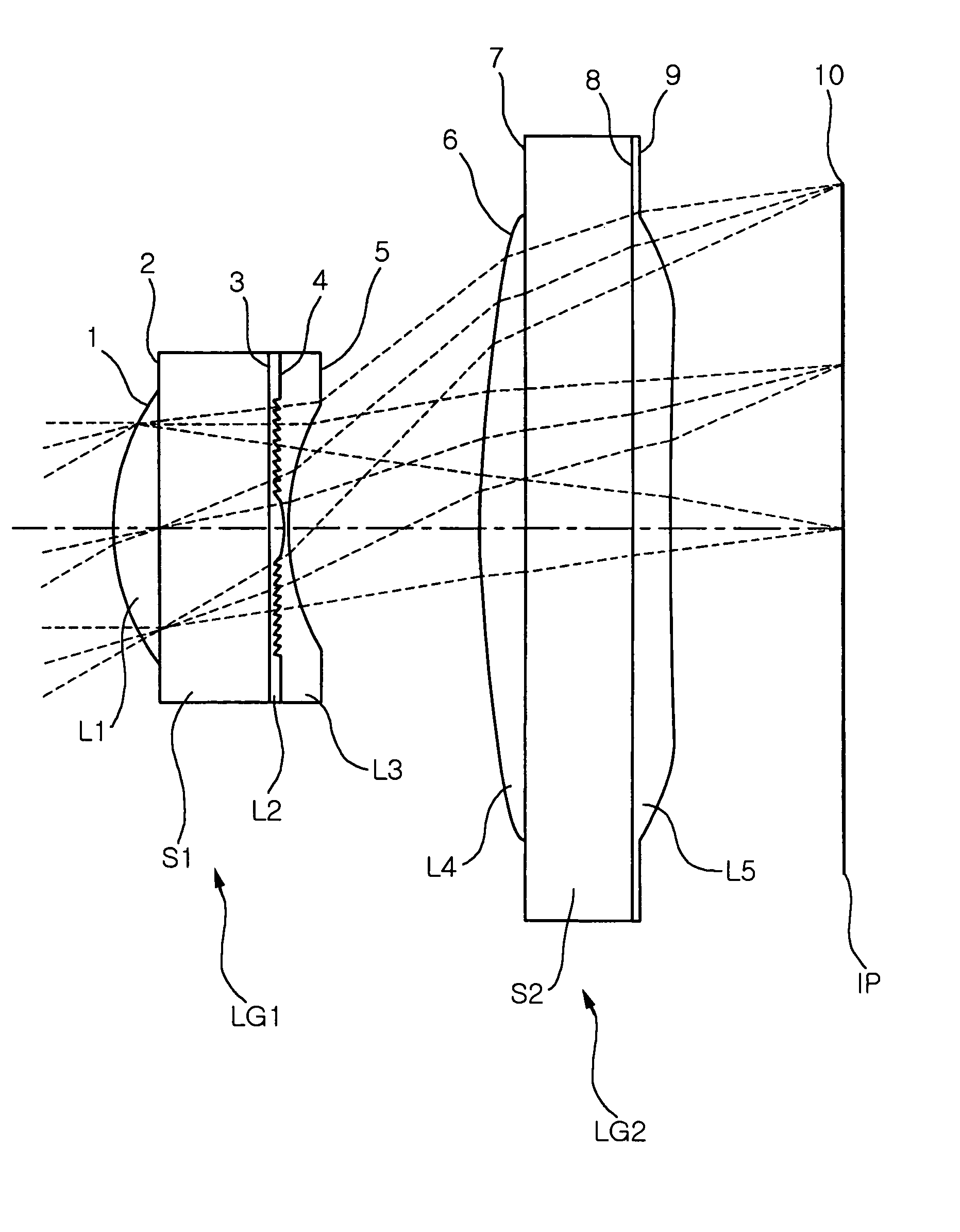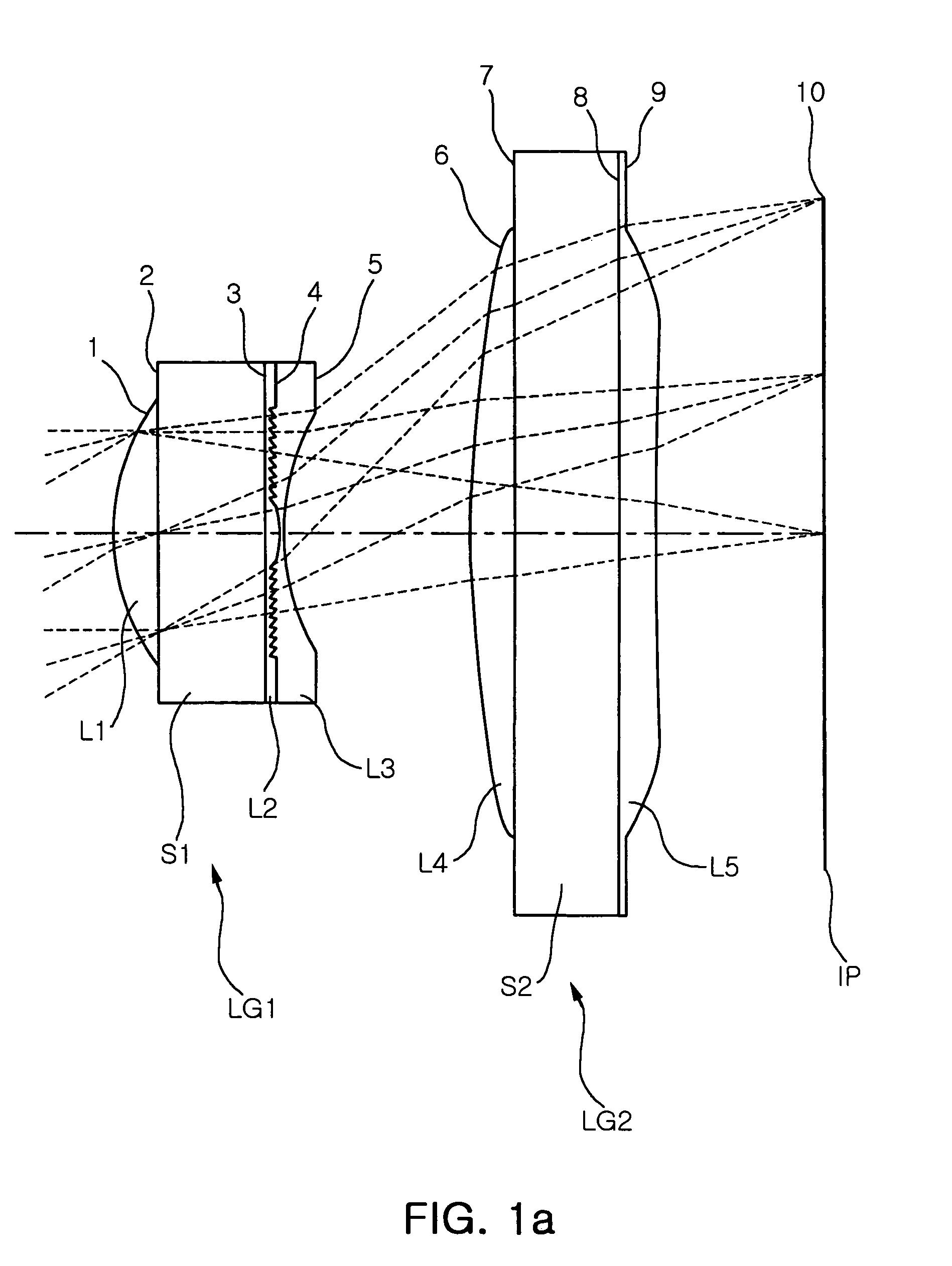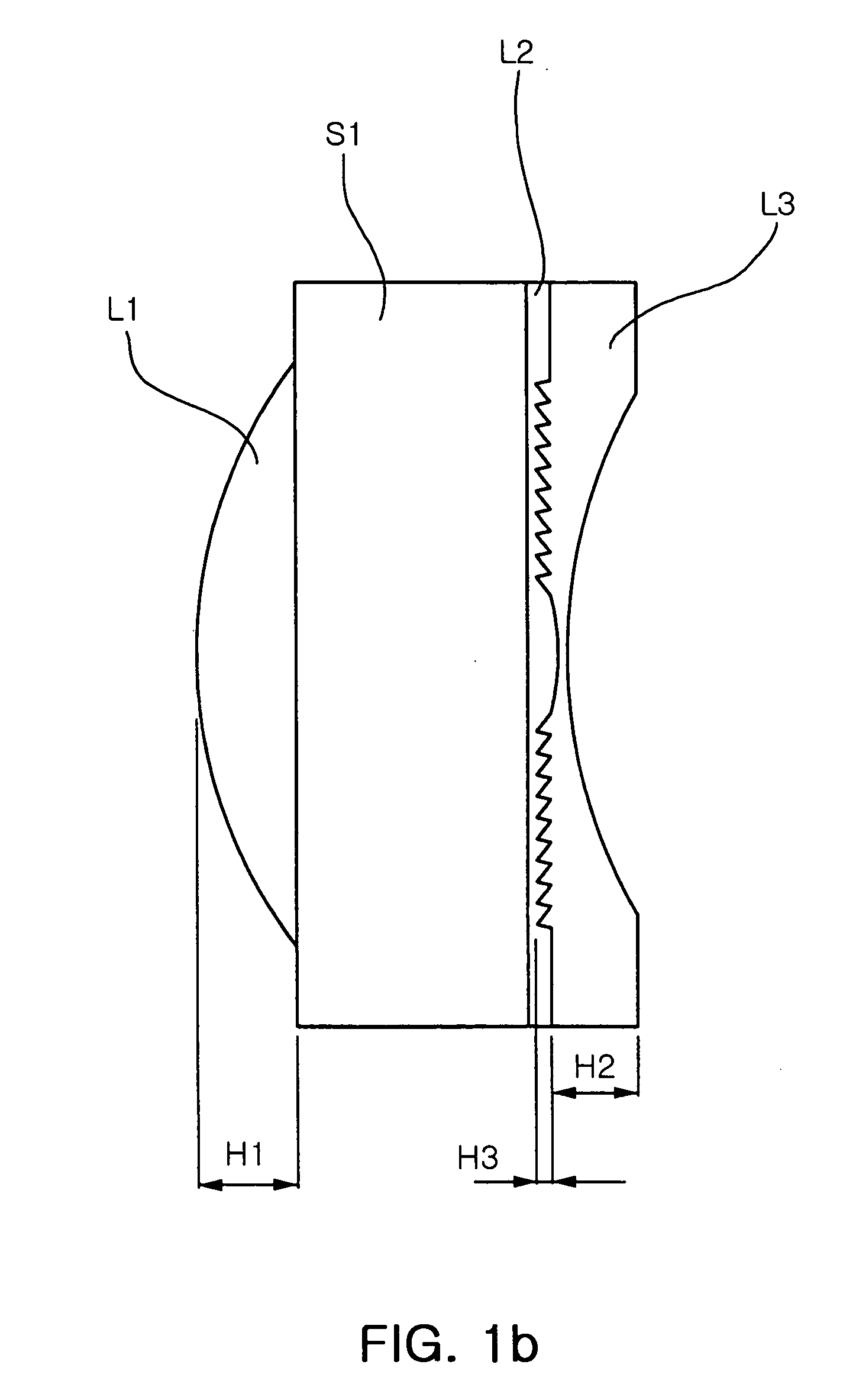Wafer scale lens and optical system having the same
a scale lens and optical system technology, applied in the field of scale lens and optical system having the same, can solve the problems of reducing the efficiency of optical systems, requiring cameras to be small and light weight, and limited in miniaturization, so as to reduce the angle of light incident, improve diffraction efficiency, and high resolution
- Summary
- Abstract
- Description
- Claims
- Application Information
AI Technical Summary
Benefits of technology
Problems solved by technology
Method used
Image
Examples
example 1
[0084] Table 1 below shows data of lens arrangement for Example 1 according to the present invention.
[0085]FIG. 1a is a diagram of lens arrangement in an optical system having wafer scale lenses in Example 1 of the present invention and FIG. 1b is a magnified view of the first wafer scale lens. FIGS. 2a to 2c show aberrations of the optical system of Example 1 illustrated in Table 1 and FIG. 1. FIG. 3 is a graph showing MTF characteristics of Example 1.
[0086] In addition, in the following graph illustrating astigmatism, “S” represents sagittal, and “T” represents tangential.
[0087] Here, the MTF depends on a spatial frequency of a cycle per millimeter and is defined by the following Equation 3 between a maximum intensity and a minimum intensity of light. MTF=Max-MinMax+MinEquation 3
[0088] That is, if the MTF is 1, a resolution is most ideal and a resolution deteriorates as the MTF is reduced.
[0089] In Example 1, the F number FNo is 2.8, the angle of view is 60 degrees, the dis...
example 2
[0093] Table 3 below shows data of lens arrangement for Example 2 according to the present invention.
[0094]FIG. 4 is a diagram of lens arrangement in an optical system having wafer scale lenses according to the second embodiment of the present invention, and FIGS. 5a to 5c show aberrations of the optical system illustrated in Table 3 and FIG. 4. FIG. 6 is a graph illustrating MTF characteristics of the second embodiment.
[0095] In Example 2, the F number FNo is 2.8, the angle of view is 60 degrees, TL is 3.28 mm, the effective focal length f of the optical system is 2.76 mm, the focal length f1 of the first wafer scale lens LG1 is 3.53 mm, the focal length f2 of the second wafer scale lens LG2 is 6.76 mm, the image height is 3.2 mm, the number of pixel is 640×480 and the size of each pixel is 4 μm.
TABLE 3PlaneRadius ofPlane IntervalRefractiveNo.Curvature R (mm)t (mm)Index nd*11.13200.20001.582∞0.50001.4743∞0.05001.584—0.02001.47*51.30600.8350—*63.29800.20001.587∞0.50001.4748∞0.18...
example 3
[0099] Table 5 below shows data of lens arrangement for Example 3 according to the present invention.
[0100]FIG. 7 is a diagram of lens arrangement in an optical system having wafer scale lenses in Example 3 according to the present invention. FIGS. 8a to 8c show aberrations of the optical system illustrated in Table 5 and FIG. 7. FIG. 9 is a graph illustrating MTF characteristics of Example 3.
[0101] In Example 3, the F number (FNo) is 2.8, the angle of view is 60 degrees, TL is 3.36 mm, the effective focal length f of the optical system is 2.76 mm, the focal length f1 of the first wafer scale lens LG1 is 3.68 mm, the focal length f2 of the second wafer lens LG2 is 6.99 mm, the image height is 3.2 mm, the number of pixels is 640×480, and the size of each pixel is 4 μm.
TABLE 5PlaneRadius ofPlane IntervalRefractiveNo.Curvature R (mm)t (mm)Index nd*11.22500.20001.582∞0.50001.4743∞0.05001.584—0.02001.47*51.54401.0230—*62.24300.20001.587∞0.50001.4748∞0.18001.58*94.24520.6880—10∞——
[010...
PUM
 Login to View More
Login to View More Abstract
Description
Claims
Application Information
 Login to View More
Login to View More - R&D
- Intellectual Property
- Life Sciences
- Materials
- Tech Scout
- Unparalleled Data Quality
- Higher Quality Content
- 60% Fewer Hallucinations
Browse by: Latest US Patents, China's latest patents, Technical Efficacy Thesaurus, Application Domain, Technology Topic, Popular Technical Reports.
© 2025 PatSnap. All rights reserved.Legal|Privacy policy|Modern Slavery Act Transparency Statement|Sitemap|About US| Contact US: help@patsnap.com



